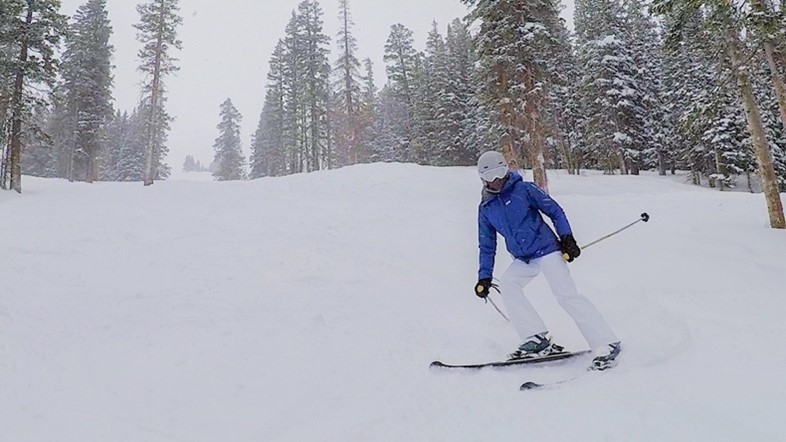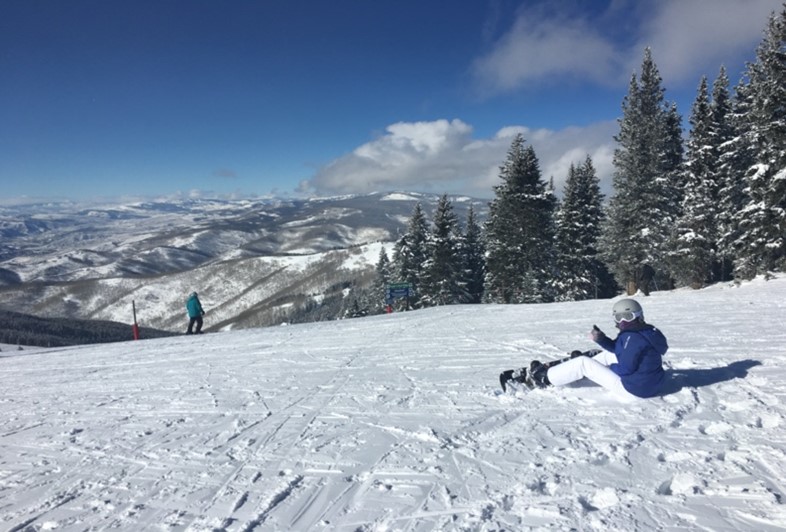
As students across the nation head out for their spring break trips, many either venture to the beach or hit the slopes. Both offer different experiences and adventures.
If you chose to hit the slopes or are planning a trip for spring hiking, there are a few important insights to consider, as referenced in the Summit Daily’s 2019 article titled, “Pushing the limit: Understanding the body’s performance at high elevation” (Dutta, 2019).
Altitude sickness is a very common condition at high altitudes, and it is caused by hypoxia. This often occurs at altitudes above 8,000 feet because barometric pressure is lower, meaning there is less air that is inhaled and therefore, less oxygen into the circulation. Ski resorts in Breckenridge, Colorado are all above 9,000 feet, lending it to be considered a hypoxic environment.

Hypoxia is a condition defined by low blood oxygen content that can lead to many symptoms such as: headaches, confusion, altered heart rate, shortness of breath, fatigue, and more. Hypoxia can vary in severity and either be acute or chronic.
A pulse oximeter can be used to measure the peripheral capillary oxygen saturation levels. For context, a normal pulse oximeter reading is 97-98%. In Denver, Colorado (elevation 5,000 ft.) generally reads peripheral capillary oxygen saturation levels at 95-96%. For visitors coming from sea level to Breckenridge, oxygen saturation levels can drop to 88% or lower since these individuals coming from sea level are maladapted and thus see more serious consequences (Dutta, 2019).
There are three stages of hypoxia that are used to characterize severity within a clinical setting: Stage 1 is 90-94%, Stage 2 is 85-90% and Stage 3 is less than 85%. When should you be concerned? Measurements in the mid-80s can be a real health concern and anything below 80%, organ function is disrupted.
If your oxygen saturation drops below 30%, you won’t have more than a few hours. Not to fret though, if you are going to Breckenridge people don’t die
from oxygen starvation, but some do experience hypoxia and get sick (Dutta, 2019).
The Summit County Rescue Group often sees cases where people don’t prepare for the high altitude and ultimately require emergency assistance. Two primary indicators of a person experiencing altitude sickness are headaches and an inability to speak. The Rescue Group encourages visitors to listen to your body and “don’t push yourself”. A lot of people are short on time and are maximizing their time by rushing to do everything they can. Slow down, take a moment, and let your body acclimatize for a few days before beginning strenuous activities.
There is no easy way around acclimatization and don’t even bother with the oxygen canisters you can buy at mountain gas stations, more or less, they make you feel better for three to four minutes, then you’re back to battling altitude adjustment.
Dr. Christine Ebert-Santos is a pediatrician who runs the Ebert Family Clinic in Frisco and has been studying the effects of high elevation on human health for two decades.
“The hypoxia inducible factor is a protein complex that affects the body’s response to low oxygen by changing the expression of hundreds of genes in various ways such as increasing small blood vessels bringing oxygen to tissues,” Ebert-Santos said. “It’s a response to your body recognizing that it is not getting enough oxygen as it had been getting previously. If it goes on long enough, the body knows it needs to do something internally because it is not getting something externally” (Dutta, 2019).
Once the hypoxia inducible factor is activated, the body kicks in sending alerts to different organs to compensate for the loss. Initially, the kidneys send out a hormone called erythropoietin, also known as EPO. Ebert-Santos says EPO can be detected in the body as soon as two hours after reaching high elevation. EPO activates the bone marrow, which produces and stores red blood cells, to mature reticulocytes (immature red blood cells) into mature red blood cells; more red blood cells in the body means more oxygen carrying capacity to make up for the lower concentration in the air.
Ebert-Santos warns that, while the EPO effect starts responding relatively quickly, the body still needs time to acclimatize other parts of the body as normal with lower oxygen saturation. It can take days, or even months before the body feels like it is getting enough oxygen.
EPO has been famously utilized as a performance-boosting effect. An athlete with a higher red-blood cell count and hemoglobin concentration won’t get fatigued as quickly and will be able to perform stronger and longer than those without (Dutta, 2019).
“There is a misconception that training at high altitude is advantageous because of the oxygen deprivation, but it is so much more complex than that,” says Robert Ebert-Santos, Dr. Ebert-Santos’ son as well as researcher and communications manager for the Ebert Family Clinic. “The oxygen deprivation limits your performance in every other aspect. You can’t exert muscles to their fullest capacity because you will run out of respiratory stamina before you even get to the point where your muscles are tired” (Dutta, 2019).
This leads to athletes having a “live high, train low” philosophy, where they live at high altitudes to better maximize blood oxygen efficiency and train at low altitudes to maximize their workouts.
So spring breakers, beware! Enjoy the après skiing for a day or two before actually hitting the slopes.
Resource: Dutta, D. (2019, September 5). Pushing the limit: Understanding the body’s performance at high elevation. Summit Daily. https://www.summitdaily.com/news/pushing-the-limit-understanding-the-bodys-performance-at-high-elevation/